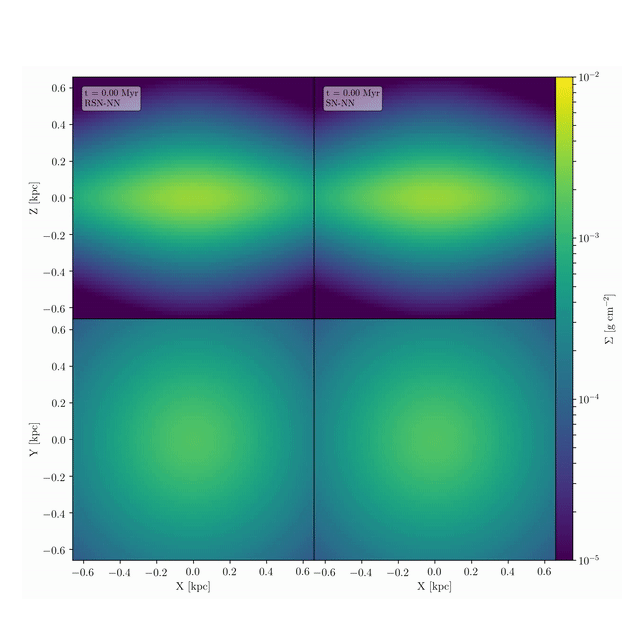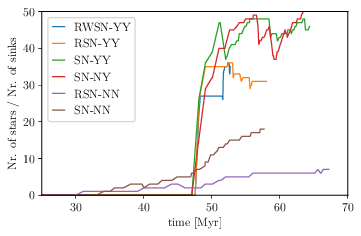Effect of stellar feedback on star formation in Dwarf Galaxies
Pierre Nürnberger
Dwarf galaxies are thought to represent a big portion of galaxies within the observable universe. As they contain only small amounts of gas mass (and also stellar mass) compared to galaxies like the Milky Way they are more difficult to observe and not as easy to study.
To better understand the environments within dwarf galaxies and the accompanied star formation we perform simulations where we vary the included stellar feedbacks (e.g. supernovae, stellar winds or ionizing radiation).
We setup a dwarf galaxy where we initially drive turbulence by injecting supernovae at random positions. Once the gas becomes dense enough it collapses and forms sinks (dots in the video). In each sink we create one massive star per 120 M⊙ in the range of 9 to 120 M⊙. The number of massive stars per sink determines its color in the video (black ~1, redder more than 1 massive star). The video shows two different runs where we include supernova feedback in both and ionizing radiation feedback only in the left panel as denoted in the name of each run. The top and bottom row show the edge and face on view respectively. We observe that the massive stars are not as clustered in the simulation with radiation feedback and that the subsequent supernovae have a lesser impact on the surrounding medium.
In Figure 1 we quantify this by plotting the mean number of massive stars per sink (stars per black dot). Here we also show additional runs where the sink formation criterion are varied. We find that both the inclusion of different stellar feedback mechanisms as well as the assumed specific star formation criteria are very important for the continued evolution of the dwarf galaxy and its star formation rate. As the radiation feedback creates a HII region around the sinks it allows for the supernova momentum to be better distributed and direct more momentum into the galactic disk. In the run without radiation feedback the SN encounters a much denser environment early on which hinders its expansion into the disk and directs more of the momentum outwards.

